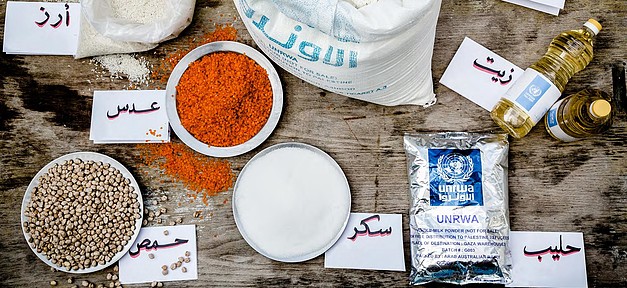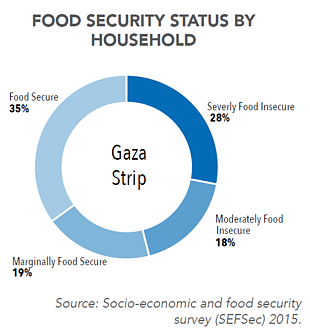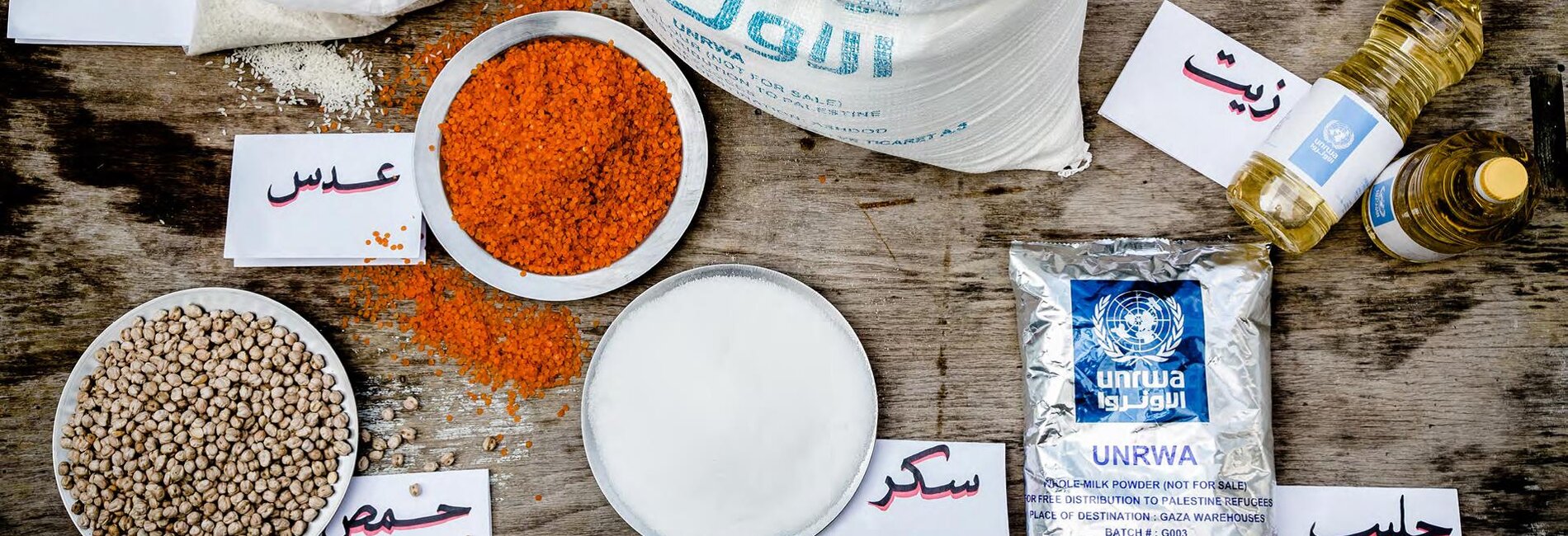Revised food baskets aim to improve nutrition among food insecure refugees in Gaza
Lack of economic opportunities remains the main driver of food insecurity

At the end of January, UNRWA completed a comprehensive revision of the contents of its food assistance rations aimed at improving them against three main criteria: (i) health and nutritional values; (ii) public acceptability and local food habits; (iii) availability and logistical practicalities. The new baskets will be launched during the April-June food distribution round for all 960,000 beneficiaries.
The revision process was highly participatory and the views of beneficiaries were captured through ad hoc consultations, focus groups and periodic surveys. An extensive outreach campaign on the new food baskets will be rolled out during February and March to ensure that all questions and concerns of beneficiaries will be addressed.
UNRWA’s food assistance program includes two separate food baskets: a regular one and an enhanced basket targeting beneficiaries qualifying as “abject poor”. Among other changes, canned meat has been replaced in both baskets with more nutritious items due to the meat’s low nutritional value (high cholesterol) and low satisfaction indicated by beneficiaries. The abject poor basket now includes canned sardines, which contain low-fat animal protein, calcium and the important bone-building vitamin D. Both food baskets now include lentils and chickpeas as optimal additions because of their high nutritional value (protein). Flour, rice and sunflower oil remain unchanged.
Additionally, UNRWA will adjust its distribution methods to improve fairness. The new method will be based on the actual number of household members rather than on pre-defined family size groups. Each beneficiary household will receive a food basket calculated by multiplying the per capita ration by the family size.
High levels of food insecurity

Food insecure families in poverty spend half their income on food. Food assistance enables scarce cash resources to be spent on other essentials such as education, health and clean water. This prevents further deteriorations in food security and livelihood status, and avoids the use of negative coping mechanisms.
Unemployment in the Gaza Strip, 38.4 per cent in the last quarter of 2015, remains the highest in the world and one of the main drivers of food insecurity. Youth unemployment, which exceeds 60 per cent, is particularly alarming. Lower household incomes, poor food utilization due to poor quality water, sanitation and hygiene, limited access to health care, and the declining quality of diets also contribute to food insecurity.
Approximately 50 per cent of the Palestinian population suffer from more than one micronutrient deficiency, particularly female adolescents in Gaza where 72 percent are deficient in vitamin D and 64 percent are deficient in vitamin A. Preliminary findings from an IDP survey in Gaza reveal a high number of families incurring debt to purchase food, in addition to other negative coping mechanisms related to food consumption and diversity.
* This article was contributed by UNRWA










